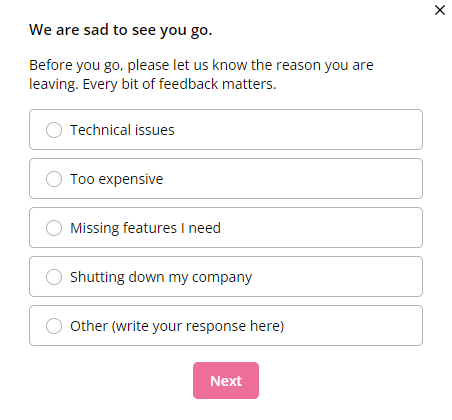For a SaaS company, analyzing user feedback is the best shortcut to discovering terrific new ideas and creating a solution that truly addresses the customers’ needs. But actually putting that into practice can be challenging.
With all the different types of user feedback available, which ones do you choose? When and how do you ask for feedback? And what’s the best way of implementing change based on the actionable insights that feedback generates?
In this article, we’ll explore all of these questions. We’ll also take a look at a few practical tips for incorporating feedback into your development workflow in a way that’s genuinely effective.
Why User Feedback is Important in the SaaS Space
The SaaS industry is a big and very competitive business. Globally, it was worth about $274 billion in 2023 and is expected to grow by around 18.4% a year between now and 2032.
As a cloud-based B2B field, the SaaS space has several characteristics that distinguish it from other big industries such as retail or manufacturing. For one thing, sales cycles tend to be long. According to Hubspot, it takes 84 days on average to sell a SaaS solution, but sales cycles get longer for bigger deals and in more sensitive industries such as cybersecurity.
Businesses looking to invest in a SaaS solution generally take time to do substantial research before committing to a purchase—comparing solutions to each other, asking their peers, and trying out those tools that offer a free trial. This, coupled with the fact that the industry is so competitive, means you have to nail customer acquisition and retention. Feedback is one of the best tools that can help you with that, and it definitely should be a part of your SaaS marketing strategy.
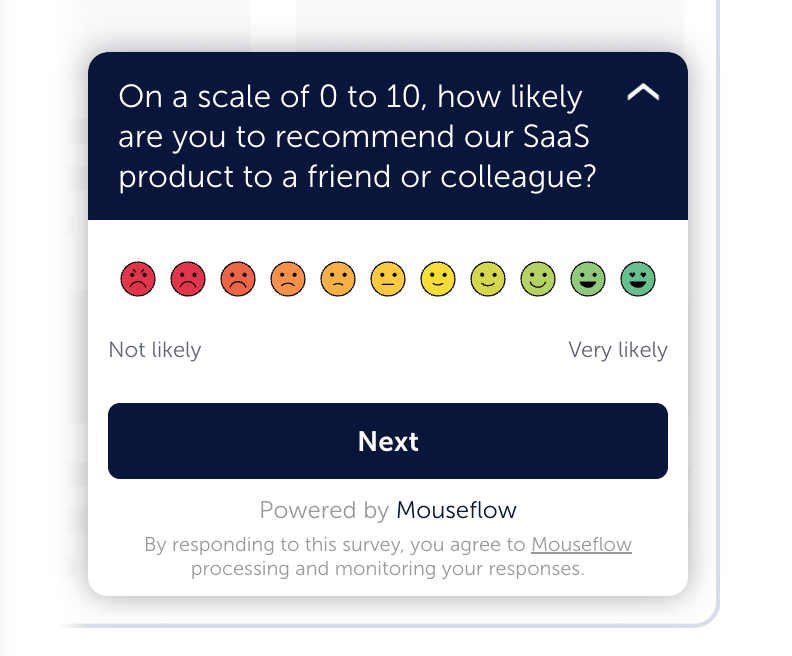
Net Promoter Score (NPS) Surveys are a useful tool that helps quantify customer loyalty and the influence of word-of-mouth recommendations, one of the main drivers in SaaS sales.
Finding out how existing customers feel about your solution and service means you can fine-tune your product and tailor promotions in line with feedback.
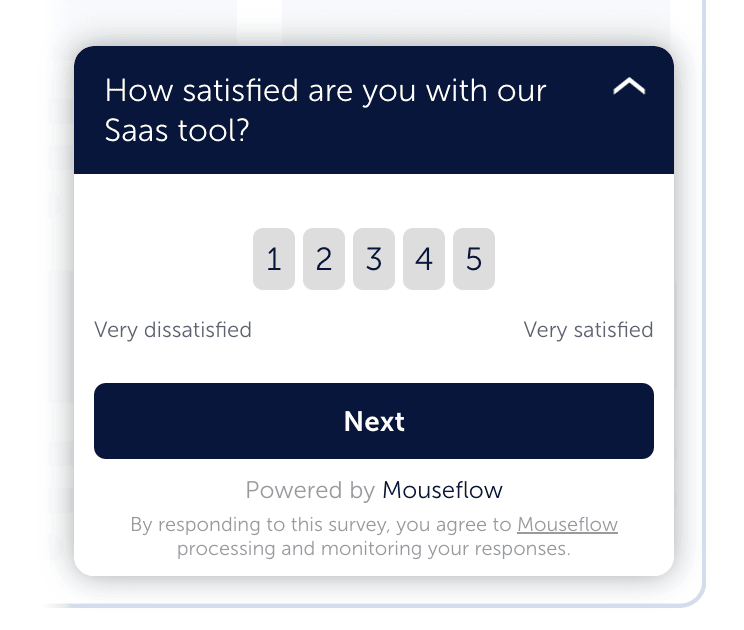
Customer Satisfaction (CSAT) surveys help SaaS companies understand how much their customers like their product.
What features do they find most valuable? What benefits have they experienced using your SaaS product? What goals has it helped them achieve?
These answers will shape your product development and SaaS content marketing strategy so that you can attract new customers while making improvements to your existing product to drive brand loyalty.
Let’s look at a few types of customer feedback SaaS companies often use to gain valuable insights into the customer experience.
Types of User Feedback SaaS Companies Rely On
There are multiple types of user feedback and methods for collecting them. All of them can generate helpful insights to assist your dev teams in fine-tuning your SaaS product.
Some of the most common types and methods are:
- Direct: Feedback you proactively solicit through in-app surveys, interviews with focus groups, and user testing. All the scores like NPS, CES (Customer Effort Score), and CSAT belong to this type.
- Indirect: Passive or reactive feedback that you don’t solicit, but instead find through other means such as social listening tools, customer support tickets, or online review sites like G2 and Google.
- Inferred: Feedback you collect by evaluating customer analytics, such as behavioral data, website sessions, and product usage. The easiest way to capture inferred feedback is by using a session recording tool and a website heatmap tool.
Each method has its own benefits and will give you different answers to different questions. For example, simple in-app surveys you can set up in a couple of clicks with a user feedback tool are a good way of gauging customer satisfaction.
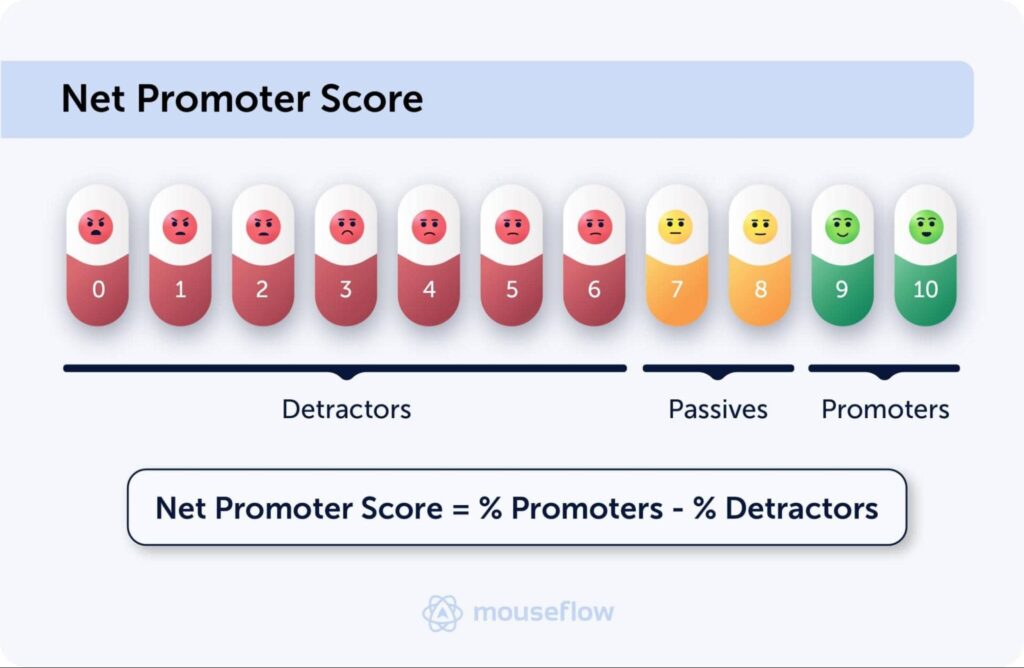
But if you want to unearth more profound customer insights, focus groups and user interviews (which are also forms of direct SaaS feedback) may be the answer.
Each method has its own applications. The question is, when is the right time to use it.
When to Collect User Feedback for SaaS Products
To maximize the benefits of collecting active feedback, you need to answer the main W-questions: when, where, what, and whom to ask.
We covered the general principles in a separate blog post about learning to use feedback surveys, but when it comes to SaaS, there are some distinct situations where feedback can really help you understand what’s going on and improve things. Here are the four situations where you should collect feedback from the customers of your SaaS product:
1. End of trial period
At this point, the user will probably be focused on assessing whether to continue with your product or not. They are asking themselves what they like and dislike about your product, which means they have their ideas formulated in their head. So, it’s easy for them to respond to a survey asking the same questions.
Requests for feedback at this stage have an additional benefit – they prove your company is receptive to suggestions.
What questions to ask at the end of the trial
At this stage, it’s worth focusing SaaS feedback on the user experience and pain points. You want to find out why the user is or isn’t upgrading to a paid plan so you can make improvements and convert more trial users in the future.
The survey should include a mixture of quantitative feedback questions, such as which feature they used the most and how would they rate your product, and qualitative ones, such as giving users an option to elaborate on what would entice them to convert.

Quantitative and Qualitative Feedback
- Quantitative feedback – the type feedback that you can quantify, transform into numbers. That’s all sorts of scores, feature adoption information, heatmaps, and more. Quantitative feedback is easier to collect and analyze at scale.
- Qualitative feedback – the type of feedback that you cannot quantify, such as session replays, interviews with customers and potential customers, and focus groups. Qualitative feedback is harder to analyze, but it may contain deeper insights.
💡Check out our survey question bank for ideas about customer experience-related questions.
Use this feedback to action changes that will lead to more conversions. For example, if patterns show that most trial users find the solution too expensive, you can consider ways to offer a lower-tiered plan with basic features.
2. Following customer support interaction
Since the user’s interaction with the customer support team has just happened, you’re likely to get honest feedback both about the original issue and the team’s response.
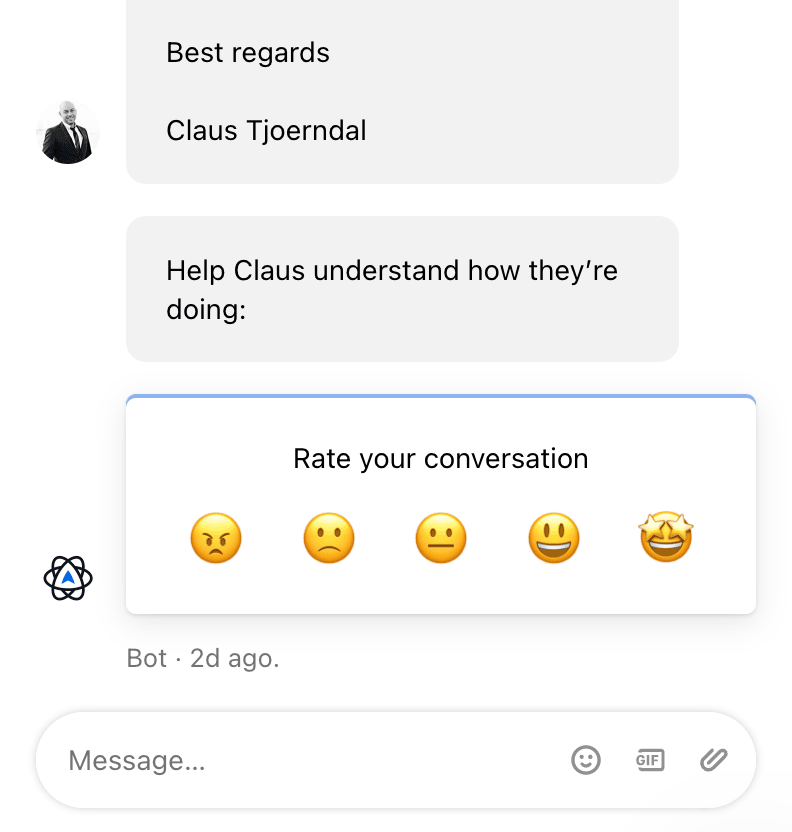
Example of an in-app SaaS feedback survey fired using Intercom feedback software, asking to evaluate the quality of the customer support interaction (screenshot from Mouseflow app)
What questions to ask after customer support interactions
A simple one- or two-question survey is an easy way for users to rate their experience. Here’s a couple of most typical examples of SaaS feedback questions for support interactions:
- Please rate your experience.
- Was your problem resolved?
Questions like these will tell you how effective your customer support team is. If customer support takes place over the phone or via live chat or chatbots, you can also use these channels to issue surveys. For instance, we use Intercom for in-app support and ask these questions after interactions with customer support engineers – you can see the example of such a survey above.
3. After new features are released
After a release, a feature enters the period of so-called feature hypercare stage. This is when the product team is paying close attention to bugs and UX problems that may have been overlooked during the quality assurance stage and also is trying to understand how well the feature is being received by customers.
In-app feedback widgets with CSAT and CES surveys as well as product analytics metrics are particularly useful here for gathering direct feedback.
But it’s also worth looking at app session replays, as well as user behavior patterns at this stage. You want to see what aspects of the new features users interact with and to what extent. This type of feedback can reveal whether you need to improve a feature’s functionality or provide better documentation to help users understand it.
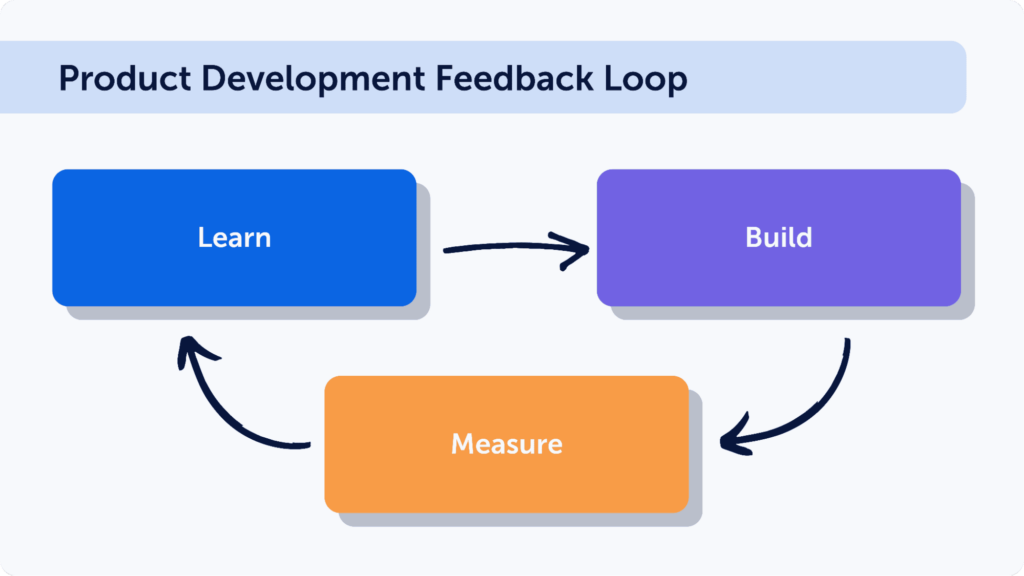
A simple scheme of a product development feedback loop: learn by collecting customer feedback, build based on it, measure if you’ve built the right thing.
4. On cancellation
Reducing customer churn is critical for SaaS success, but in reality, it’s difficult to eliminate it entirely. That said, there are plenty of lessons to be learned from users who have decided your product just isn’t for them. If they’ve had a bad experience, knowing about it is the first step to putting it right.
At this stage, customers may already be disengaged and maybe even abandoned the product, so getting them to contribute feedback can be challenging. It may require a combination of tactics to determine their reason for canceling.
Consider sending an email with a quick and easy feedback survey form as part of your cancellation flow.
Continue collecting passive feedback – monitoring review sites and social media for any mentions of your brand and tool. If someone has canceled because they feel they didn’t get any value for money or had a negative experience, chances are they’ll share their feelings online. These customer reviews (even though its negative feedback) are of higher value to a SaaS business than those positive but incentivised ones.
Work all of this feedback into your annual or quarterly review as part of your customer success strategy. Addressing customer concerns regularly is key to keeping customers happy and thus reducing churn.
💡Pro tip: Ideally, you want to know if something isn’t working for your customers before they cancel the product subscription and churn. So, it makes sense to implement a customer health score based on product usage, support ticket resolution time and rate, and other customer health metrics.
Set up alerts for when this score drops below a certain threshold for key customers, so you can intervene and prevent churn.
Threading User Feedback for SaaS into the Development Cycle
Sending out requests for feedback is one thing, analyzing that feedback and using it to improve your product is quite another. Here are the three steps you need to take to turn constructive feedback into concrete product developments.
Communication between teams
First, ensure your customer support team, customer success team, and product development team can communicate with each other effectively. You need to have a process in place for when critical customer feedback arrives via a support channel and needs to be prioritized.
Note that this works both ways. If your customer support team doesn’t have a full understanding of the technicalities of your product, they might not be able to consistently capture all the information needed to solve a client’s problem. In which case, they’ll need backup support from the development team that’s immediately accessible.
Remember that other departments also receive customer feedback, which should be openly shared with the rest of the organization. For example, sales reps may receive valuable insights into customer needs, demographics, and pain points during the lead prospecting stage.
When shared with others, this means the marketing team can create a clearer ICP, product team can create new features aligned with needs, and customer service teams can better respond to inquiries.
Centralize feedback storage
Most SaaS companies use a mixture of different types of client feedback. In order to analyze them systematically and use them to generate relevant and viable insights, it’s important to store all the feedback on a central hub.
This is crucial because what you don’t want is different types of feedback becoming siloed. The aim is to analyze all feedback together so you can more easily spot patterns. Which features do users complain about the most? Is there a feature request that keeps cropping up over and over again? Having all the information in one place makes it much more straightforward to analyze and act upon.
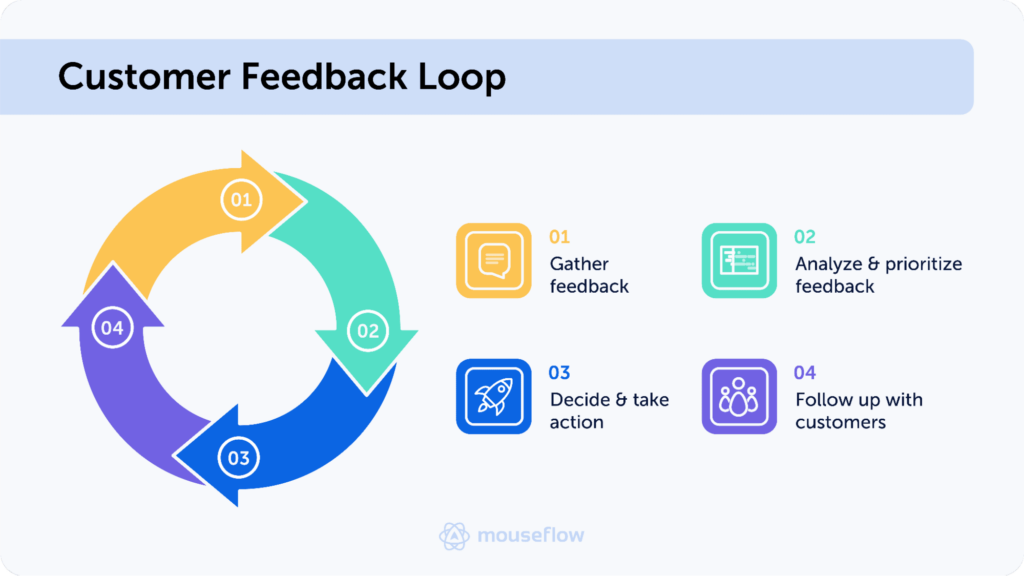
A customer feedback loop that could be applied to different areas of SaaS, from product to marketing and customer support and success.
Incorporate feedback analysis into the development process
Finally, you need to implement robust procedures for incorporating the insights generated by feedback into the product development process. Don’t leave it to chance. Consider all the different types of feedback and how you could best work them in. This could mean:
- Having a dedicated channel for customer support to contact devs when an issue arises needing immediate attention.
- Setting aside time to analyze product feedback at the beginning of each development cycle.
- Scheduling special post-launch sessions to check feedback on new features.
Building your response to feedback directly into the development process in this way makes sure you make the most of it.
Making User Feedback Work for SaaS
To maintain a competitive edge in SaaS business, you need to use all the resources available to you, and one of the most valuable of those resources is user feedback.
User feedback gives you a first-hand understanding of what your clients really want and expect. It can even lead to you uncovering innovative ideas you may never have thought of yourself. With a little planning and a systematic approach to incorporating that feedback into your development protocols, you can deliver for your clients every time. And that’s exactly what you want, after all—their success is your success.

